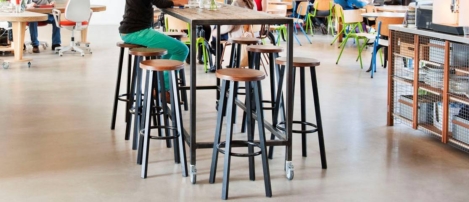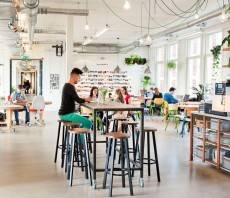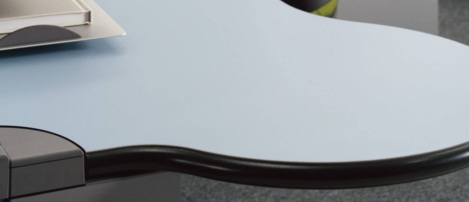December 13, 2015
Best Places to Work + Make the most of each day + Strategic role of offices 0
 In this week’s newsletter; Mark Eltringham on the prescience of philosopher Seneca on a time and a place to work; and a report by Sara Bean finds the boardroom increasingly views office space as a strategic asset. Glassdoor announces the best places to work for 2016; researchers reveal the phenomenon of ‘inattentional deafness’; a new Global Alliance for Buildings and Construction is announced; and Gartner says we’ll be using three technical devices by 2018. Over 100 councils to join an office-sharing scheme; Gen Z will blur the boundaries between home and work, and too much focus on standing in the sit-stand debate. Download the new issue of Work&Place and access an Insight Briefing, produced in partnership with Connection, which looks at agile working in the public sector. Visit our new events page, follow us on Twitter and join our LinkedIn Group to discuss these and other stories.
In this week’s newsletter; Mark Eltringham on the prescience of philosopher Seneca on a time and a place to work; and a report by Sara Bean finds the boardroom increasingly views office space as a strategic asset. Glassdoor announces the best places to work for 2016; researchers reveal the phenomenon of ‘inattentional deafness’; a new Global Alliance for Buildings and Construction is announced; and Gartner says we’ll be using three technical devices by 2018. Over 100 councils to join an office-sharing scheme; Gen Z will blur the boundaries between home and work, and too much focus on standing in the sit-stand debate. Download the new issue of Work&Place and access an Insight Briefing, produced in partnership with Connection, which looks at agile working in the public sector. Visit our new events page, follow us on Twitter and join our LinkedIn Group to discuss these and other stories.













 I was involved in a meeting with an office fit-out company this week which involved a discussion of how their clients can develop misconceptions about the extent to which their contemporaries are introducing new office design and management models based on agile working, shared space, mobile technology and all that other good stuff. This presents a particular challenge for firms in the sector because their day to day experiences of what clients talk about and ask from them can be pretty removed from the things talked about in the media. If you were to judge the state of the office solely on the basis of what you read and hear and see at shows, it would be easy to conclude that the office is indeed dying and dragging down with it the markets for office furniture, commercial property and traditional technology. The problem is that the facts don’t support that notion at all.
I was involved in a meeting with an office fit-out company this week which involved a discussion of how their clients can develop misconceptions about the extent to which their contemporaries are introducing new office design and management models based on agile working, shared space, mobile technology and all that other good stuff. This presents a particular challenge for firms in the sector because their day to day experiences of what clients talk about and ask from them can be pretty removed from the things talked about in the media. If you were to judge the state of the office solely on the basis of what you read and hear and see at shows, it would be easy to conclude that the office is indeed dying and dragging down with it the markets for office furniture, commercial property and traditional technology. The problem is that the facts don’t support that notion at all.











November 9, 2015
Business success is progressively less related to employment levels 0
by Mark Eltringham • Comment, Technology, Workplace, Workplace design
If you want to understand exactly how the economy has changed over the last few decades, one of the most important statistics is also one of the least remarked upon. It is the growing disconnect between a firm’s earnings and the number of people it employs, a statistic that puts paid to the lie that people are an organisation’s greatest asset. Once upon a time, of course, there was a direct correlation of one sort or another between the a firm’s revenue and the number of people it employed and consequently the amount of space that it took up. This was especially true for the world’s great manufacturers and other industries engaged in what was once proper work; moving, creating, destroying and maintaining things. Growth and success meant more employment and more space. There were economies of scale but the upshot was more or less an arithmetic progression in employment based on earnings.
(more…)